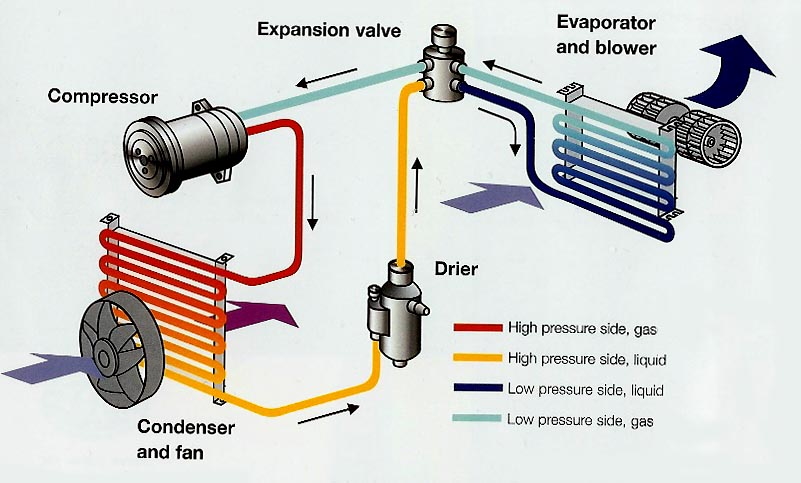Automotive AC Service and Repair
If you drive a car that has no A/C, you are either about to experience an uncomfortable and sweaty ride in the summer, or a foggy windshield in the winter.
Our shop specializes in all A/C systems, regardless of the problem, we can get it properly diagnosed and repaired back to factory quality.
Detecting damage or leaks to the A/C system of your vehicle sooner rather than later, can save you both time and money, keeping you and everyone in your car cool and worry free. Call us today or come to our auto repair shop and schedule an appointment with our technicians!
LEARN ABOUT YOUR CAR'S A/C SYSTEM:
The A/C system in a vehicle operates by removing heat from the air inside the cabin and releasing it outside, leaving cooler air circulating within the vehicle. The system has five main components: the compressor, condenser, receiver-dryer (or accumulator), expansion valve (or orifice tube), and evaporator. Here’s how each part contributes to cooling the cabin:
1. Compressor: The compressor is driven by the engine and acts as the heart of the A/C system. It compresses refrigerant gas, raising its temperature and pressure, and pushes it toward the condenser. This compressed gas then circulates throughout the system, absorbing heat.
2. Condenser: Once the high-pressure, high-temperature refrigerant leaves the compressor, it flows into the condenser, typically located at the front of the car near the radiator. The condenser cools the refrigerant by releasing heat into the outside air. As it cools, the refrigerant changes from a gas into a high-pressure liquid.
3. Receiver-Dryer/Accumulator: Located under the hood, this plays a critical role in ensuring the refrigerant flows smoothly and remains free of contaminants. Located between the condenser and the expansion valve, the receiver-dryer is essentially a small, pressurized canister filled with a desiccant material, which absorbs moisture from the refrigerant. Moisture in the system can cause several issues, like freezing and corrosion, so the desiccant helps prevent these problems.
4. Expansion Valve/Orifice Tube: This small, precise component restricts the refrigerant flow, lowering its pressure and temperature before it enters the evaporator. As the refrigerant passes through, it changes from a high-pressure liquid into a low-pressure mist, preparing it to absorb heat within the vehicle’s cabin.
5. Evaporator: Located inside the cabin, the evaporator absorbs heat from the incoming air as the refrigerant flows through it. As warm cabin air passes over the cold evaporator coils, the refrigerant absorbs the heat and humidity, cooling the air. This cooled air is then blown through the car's vents.
The refrigerant, now a low-pressure gas, flows back to the compressor, where the cycle repeats. The A/C system continues this cycle to cool the air, creating a comfortable temperature within the cabin.